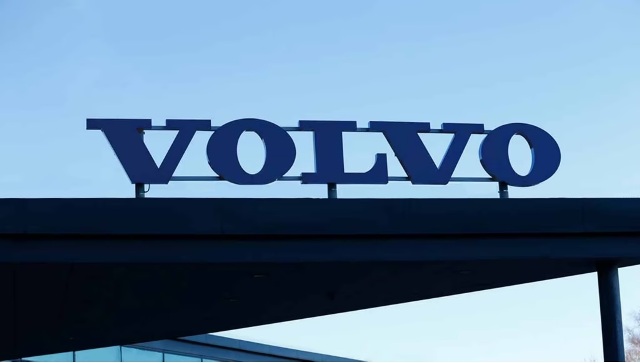
Volvo puts breaks on electric cars only ambitions due to changing market conditions
London, September 04, 2024, (Oilandgaspress) – With five fully electric cars (EVs) already on the market and another five models in development, full electrification remains a key pillar of Volvo Cars’ product strategy. Its long-term aim remains to become a fully electric car company, and it also aims to reach net zero greenhouse gas emissions by 2040.
While Volvo Cars will retain its position as an industry leader in electrification, it has now decided to adjust its electrification ambitions due to changing market conditions and customer demands.
Going forward, Volvo Cars aims for 90 to 100 per cent of its global sales volume by 2030 to consist of electrified cars, meaning a mix of both fully electric and plug-in hybrid models – in essence, all cars with a cord.
The remaining 0-10 per cent will allow for a limited number of mild hybrid models to be sold, if needed. This replaces the company’s previous ambition for its line-up to be fully electric by 2030.
By 2025, it expects the percentage of electrified products to come in between 50 and 60 per cent. Well before the end of this decade Volvo Cars will have a complete line-up of fully electric cars available. That will allow Volvo Cars to make the move to full electrification as and when the market conditions are suitable.
Volvo Cars’ share of fully electric cars stood at 26 per cent during the second quarter of 2024, the highest share among all its premium peers. Its electrified share – EVs and plug-in hybrids – accounted for 48 per cent.

Volvo Cars remains committed to its long-term ambition of full electrification, and the company’s long-term investment plan and product strategy remains geared towards fully electric cars. The adjustment to its ambitions is not expected to have any material impact on the company’s capital expenditure plans.
Volvo Cars continues to develop its plug-in and mild hybrid cars, providing it with a balanced portfolio that serves as a clear bridge to an all-electric future.
Since the company laid out its ambition to go fully electric, it has launched five fully electric models: the EX40, the EC40, the EX30, the EM90 and the EX90. The EX30 is currently ranked as the third best-selling EV in Europe, according to the latest available industry data.
At the same time, there has been a slower than expected rollout of charging infrastructure, withdrawal of government incentives in some markets and additional uncertainties created by recent tariffs on EVs in various markets. With this in mind, Volvo Cars continues to see the need for stronger and more stable government policies to support the transition to electrification.
The strategic adjustments to its electrification ambitions ensure that Volvo Cars has a flexible plan that meets customer preferences and enables value creation as a business.
“We are resolute in our belief that our future is electric,” said Jim Rowan, chief executive of Volvo Cars. “An electric car provides a superior driving experience and increases possibilities for using advanced technologies that improve the overall customer experience. However, it is clear that the transition to electrification will not be linear, and customers and markets are moving at different speeds of adoption. We are pragmatic and flexible, while retaining an industry-leading position on electrification and sustainability.”
Updated CO2 reduction path
As a result of its adjusted ambitions on electrification, the company is also updating its ambitions on CO2 reduction, which remain leading for the automotive industry. By 2030, the company aims to have reduced CO2 emissions per car by 65-75 per cent compared to a 2018 baseline, an adjustment of the previous 75 per cent reduction ambition.
For 2025, the company aims for a 30-35 per cent reduction versus a 2018 baseline, instead of the previous aim of a 40 per cent reduction.
Volvo Cars plans to make further progress, including by working with its suppliers to continue to reduce CO2 emissions from materials across the company’s value chain.
During the first half of the year CO2 emissions per car were 25 per cent lower compared with its 2018 benchmark.
Strong progress
With the small EX30 SUV continuing to perform strongly and the first customers of the fully electric Volvo EX90 flagship receiving their cars during this month, the excitement about the opportunities for Volvo Cars’ fully electric product range is stronger than ever. The EX90 represents a paradigm shift in technology, which will power a new era of Volvo Cars.
Volvo Cars has also seen the popularity of its plug-in hybrids grow, with the XC60 the best-selling plug-in hybrid model in Europe this year, according to industry data. Plug-in hybrids provide customers with an opportunity to experience electric driving if they are not yet ready or able to switch to fully electric cars.
Many of the company’s plug-in hybrid customers already travel widely on zero tailpipe emissions. Volvo Cars’ most recent data shows that around half of the kilometres covered by the latest plug-in hybrid Volvo cars are driven on pure electric power. The company will continue to upgrade its plug-in hybrids, to further increase electric usage and range, and improve the customer experience.
More information about the company strategy, investment plans and product roadmap will be set out at Volvo Cars’ 90/90 Event and Capital Markets Day, held today and tomorrow in Gothenburg, Sweden.
The small print
Volvo Cars’ ambition to reduce CO2 emissions per car covers all emissions in the Volvo Cars global greenhouse gases (GHG) protocol except the subcategory “Production and distribution of fuel and electricity” within the category “Use of sold products.”
Information Source: Read More
Oil and gas press covers, Energy Monitor, Climate, Renewable, Wind, Biomass, Sustainability, Oil Price, LPG, Solar, Marine, Aviation, Fuel, Hydrogen, Electric ,EV, Gas,


